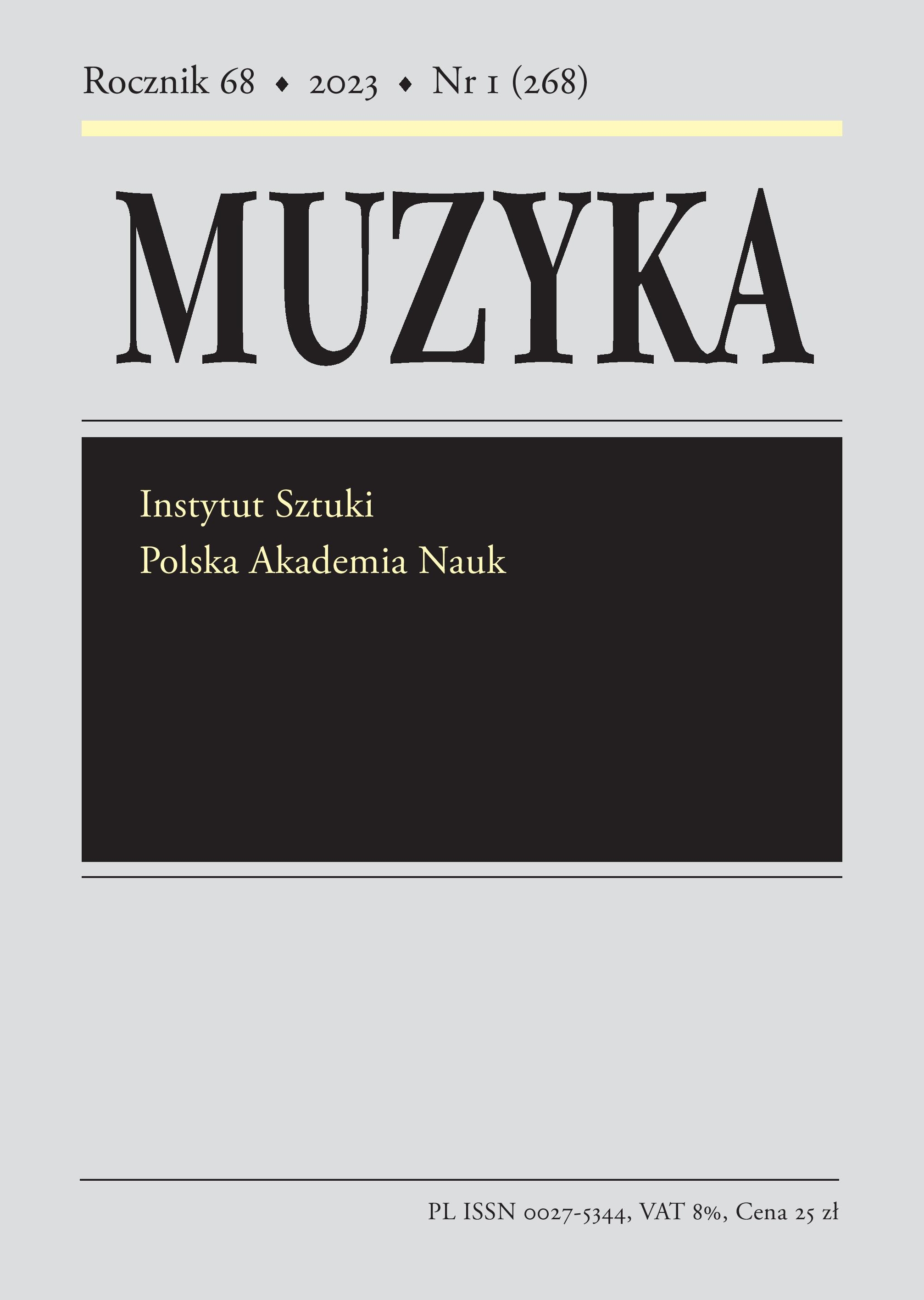„Psalm Dawida” i inne intawolacje kontrafaktur wokalnych w rękopisach organowych z przełomu XVI i XVII wieku powstałych na terenach Rzeczpospolitej
A ‘Psalm of David’ and Other Intabulations of Vocal Contrafacta in Late Sixteenth- / Early Seventeenth-Century Organ Manuscripts Compiled in the Polish–Lithuanian Commonwealth
Author(s): Marcin SzelestSubject(s): Music
Published by: Instytut Sztuki Polskiej Akademii Nauk
Keywords: contrafacta;intabulations;Psalm of David; laudi spirituali;Kražiai Tablature;Kražiai Tablature;Braunsberg–Oliva Tablature;Riga Tablature
Summary/Abstract: This article presents findings concerning intabulations of vocal contrafacta and related issues in four keyboard manuscripts compiled around the turn of the seventeenth century in Jesuit colleges in Warmia, Samogitia and Livonia.The ‘Psalm of David’ entered in the Kražiai manuscript (Vilnius, Lietuvos nacionalinė Martyno Mažvydo biblioteka [LT-Vu], shelf-mark F105-67) has been identified as an intabulation of Hans Leo Hassler’s canzonetta Chi mi dimandarà from that composer’s print Canzonette a quatro voci ... libro primo (Nürnberg 1590). The composition that follows, untitled and unattributed in the source, is a canzona by Claudio Merulo, known from four other manuscripts. These findings, complemented by analysis of the titular inscription, belie Tomasz Jasiński’s recent hypothesis that these two pieces constitute a bipartite setting by Mikołaj Gomółka of Psalm 1 in Jan Kochanowski’s Polish rendering. The Kražiai Tablature also contains an evident quotation from Palestrina’s madrigal Vestiva i colli (in Adam of Wągrowiec’s Łobzoskie) and an unattributed copy of Francesco Usper’s Ricercar Secondo. The body of contrapuntal works found in this source (in score notation) may possibly be related to the activity in the Polish-Lithuanian Commonwealth of Vincenzo Bertolusi, two of whose compositions are the only attributed pieces in this set. Surrexit Dominus [valete luctus], on the other hand, is a local piece, a setting of a song by Andrzej Krzycki included in the Tablature of Jan of Lublin and also known from tablature S-Uu vmhs 89, as well as cantionals from Staniątki, Sandomierz and Radom.The organ tablature kept at Uppsala’s Universitetsbibliotek (S-Uu, shelf-mark Vokalmusik i handskrift 89) contains intabulations of five Italian laudi copied directly from the Jesuit-tradition print Lodi spirituali novamente composte… (Venezia 1580). Two of them were later inscribed in the Braunsberg–Oliva Tablature with German titles that reflect the process of contrafactum. The German-language versions were subsequently printed in the Himmlischer Harffenklang songbook (Braunsberg 1639). The presence of an intabulation of Annibale Zoilo’s motet Dominum in sanctis ejus for three choirs similarly suggests that close contacts with Italy were maintained by the circles in which the source was compiled. Other identified contrafacta from this manuscript relate it to the musical life of the Polish–Lithuanian Commonwealth, Pomerania and Sweden. The same source contains an intabulation of Thomas Crecquillon’s chanson Pour ung plaisir, inscribed there as an anonymous ‘Fuga’, as well as two instrumental pieces with text incipits, indicating that they were performed vocally. These findings support the thesis that the manuscript was compiled in Warmia, at a place where several scribes worked simultaneously using tablature notation and works for three choirs could be performed. As far as we know, the only centre that fulfilled all these criteria was the Jesuit college in Braunsberg (now Braniewo). The majority of the contrafacta found in the Braniewo section of the Braunsberg–Oliva Tablature (Vilnius, Lietuvos mokslų akademijos Vrublevskių biblioteka [LT-Va], shelf-mark F15-284) come from printed anthologies, which became much more numerous and easily available around the turn of the century. Among the few contrafacta derived from the manuscript tradition, particularly notable is the setting of an anonymous cantio found (usually with the text Spiritus Sancti gratia) in about 20 Central European manuscripts compiled over a period of more than 200 years. They exist in numerous musical variants, but the versions recorded in the Braunsberg–Oliva Tablature and in S-Uu vmhs 89 are almost identical.A tablature from the Jesuit college in Riga (now in Uppsala, Universitetsbibliotek [S-Uu], shelf-mark Vokalmusik i handskrift 88) contains five intabulated contrafacta of secular works taken from three single-composer editions from the years 1567–1577. Their text incipits are not known from other sources, which suggests that these were local settings. The date 1620 in the manuscript’s title probably refers to the final stage of its compilation, whereas its main section may have been written as early as the first decade of the seventeenth century.Studies of contrafacta contained in keyboard manuscripts do not usually allow for detailed conclusions to be drawn concerning the literary texts, but they can provide results related to the transmission, migration and reception of the repertoire and musical performance practice in the centres where the sources were compiled. Such studies need to be conducted in a systematic manner, with special attention given to text incipits not recorded elsewhere and to works in which the incipit is incompatible with the musical genre. One example of such a potential contrafactum is Deus in adjutorium meum intende, attributed to Petrus de Drusina. The composition Słuchaj, co żywo from the Kražiai manuscript may likewise prove to be a contrafactum; therefore, contrary to what Tomasz Jasiński argues, we cannot be certain that its text was not taken from Kochanowski’s Psalter. There is also insufficient source evidence for its attribution to Adam of Wągrowiec
Journal: Muzyka
- Issue Year: 68/2023
- Issue No: 1
- Page Range: 93-154
- Page Count: 62
- Language: Polish

